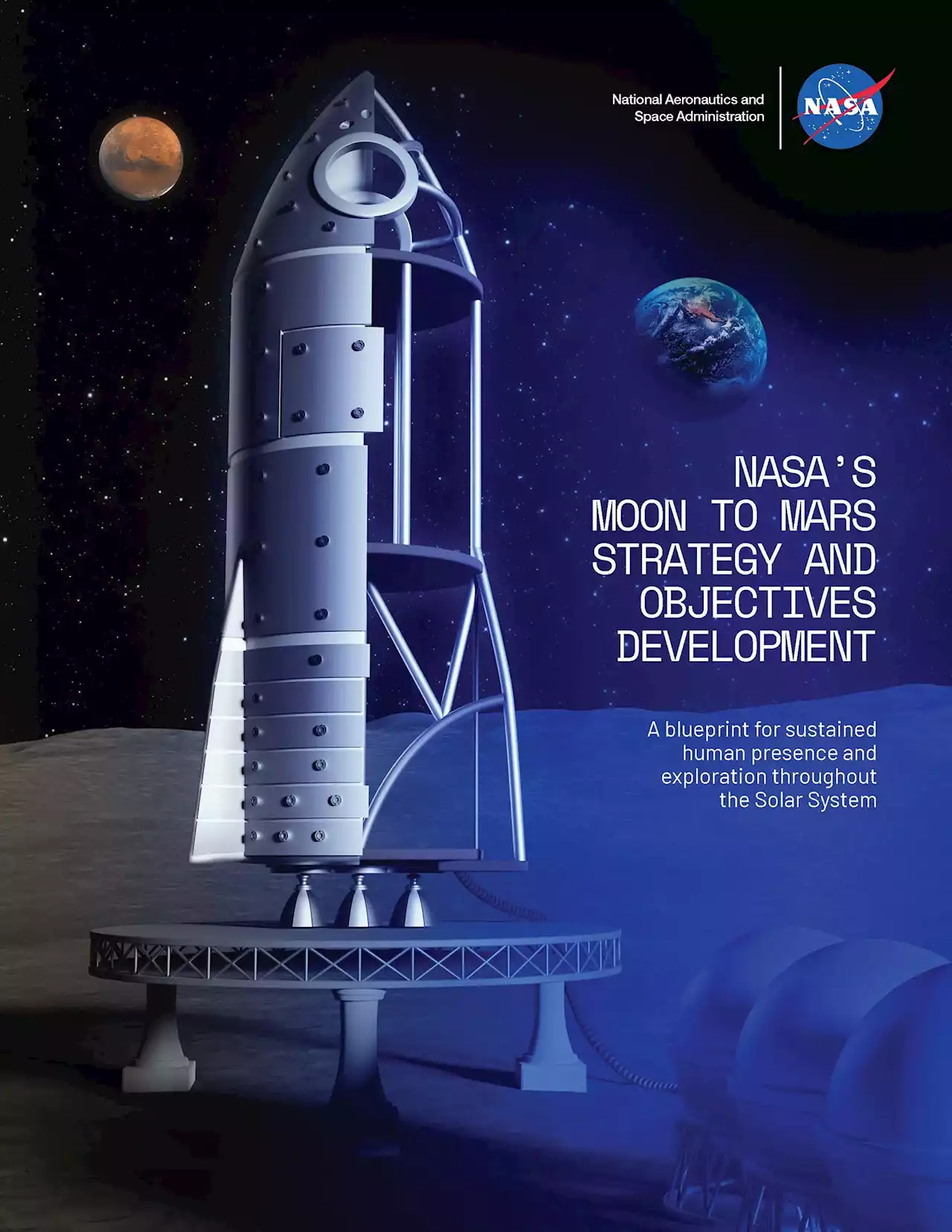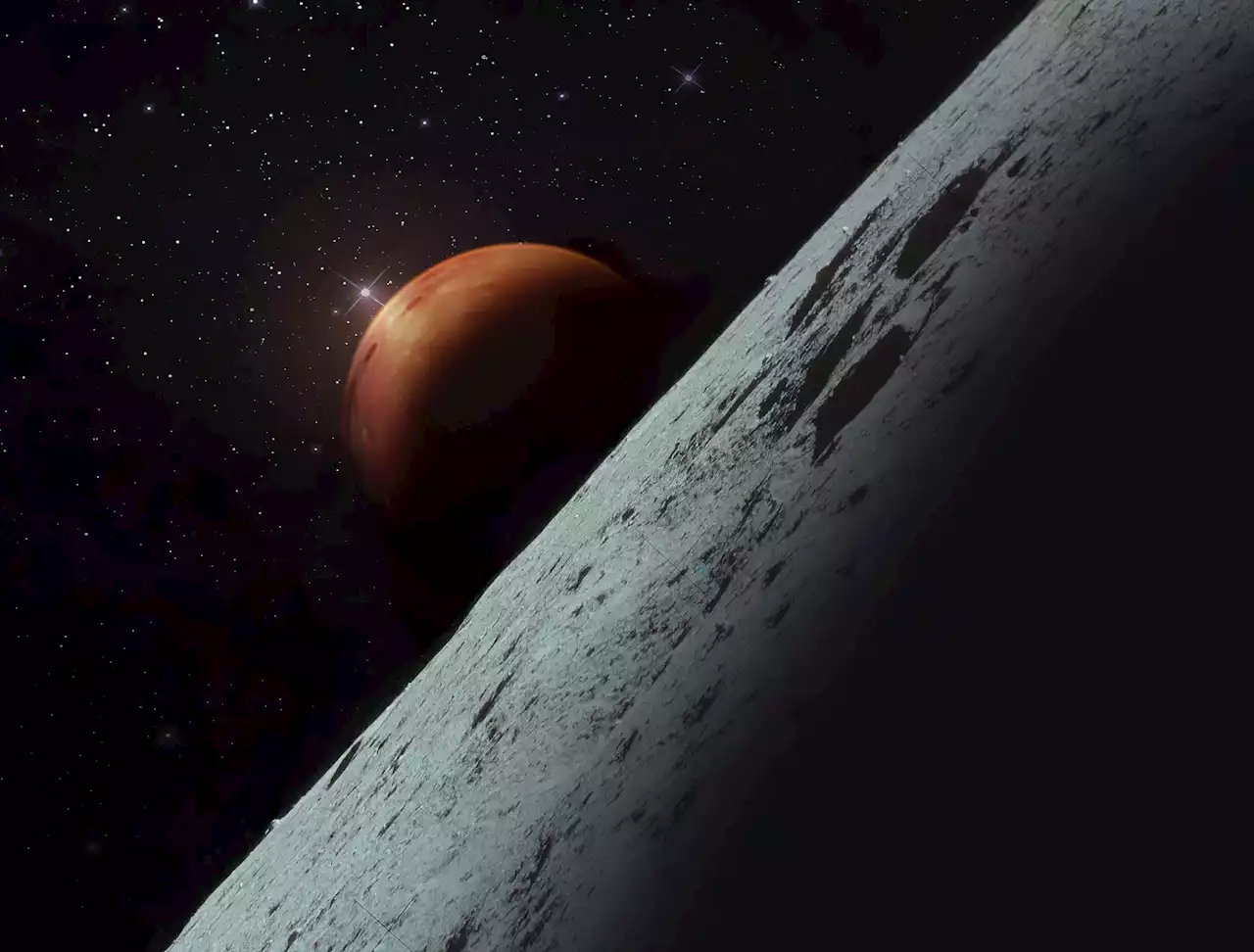The Hope orbiter, part of the Emirates Mars Mission, has flown just 100 kilometres over the surface of Mars’s smaller moon, Deimos, and taken extraordinarily detailed observations
“We are unsure of the origins of both,” said Hessa Al Matroushi, EMM science lead, in a statement. “One long-standing theory is that they are captured asteroids, but there are unresolved questions about their composition.”The orbiter’s observations of both moons indicate that explanation is unlikely. Their compositions seem to be more similar to Mars than to asteroids, pointing to the idea that they were either formed from Mars itself or from the same reservoir of planetary material.
Hope is in a unique position to observe Deimos in most detail. Spacecraft we send to Mars usually orbit the planet relatively closely for the sake of precise observations of its surface, but Deimos circles it at an average distance of 23,460 kilometres, much too high for such craft to see it in any detailVoyage across the galaxy and beyond with our space newsletter every month.
Several more close passes to this moon are planned over the course of the next year, so we should get even more clues to its composition andThe mission was originally intended to last only one Martian year, which is nearly two Earth years, but the UAE recently announced that it will be extended by another Earth year so that it can continue
United States Latest News, United States Headlines
Similar News:You can also read news stories similar to this one that we have collected from other news sources.
 This Week @NASA: Moon to Mars, Ingenuity Mars Helicopter, New Worlds With TESSSome news about NASA’s Moon to Mars Architecture … Chalk up another one for NASA’s frequent flyer on Mars … And yes, this spacecraft “scan” find things in the sky … A few of the stories to tell you about – This Week at NASA! https://youtu.be/c9urwkgU9TA First Moon to Mars Architecture
This Week @NASA: Moon to Mars, Ingenuity Mars Helicopter, New Worlds With TESSSome news about NASA’s Moon to Mars Architecture … Chalk up another one for NASA’s frequent flyer on Mars … And yes, this spacecraft “scan” find things in the sky … A few of the stories to tell you about – This Week at NASA! https://youtu.be/c9urwkgU9TA First Moon to Mars Architecture
Read more »
 The Great Interplanetary Adventure: NASA’s Moon to Mars MasterplanNASA has outlined its Moon to Mars Strategy and Objectives Development, focusing on a sustainable, long-term human presence in the solar system through an objectives-driven architectural review process under the Artemis program. As NASA evolves its blueprint for shaping exploration throughout the
The Great Interplanetary Adventure: NASA’s Moon to Mars MasterplanNASA has outlined its Moon to Mars Strategy and Objectives Development, focusing on a sustainable, long-term human presence in the solar system through an objectives-driven architectural review process under the Artemis program. As NASA evolves its blueprint for shaping exploration throughout the
Read more »
 From Moon to Mars: NASA’s Grand Plan for Human ExplorationNASA completed its first Architecture Concept Review to align its Moon to Mars exploration strategy, which includes yearly updates to incorporate new technologies and objectives. The agency aims to establish a long-term human presence on the Moon and explore Mars under the Artemis program. As NAS
From Moon to Mars: NASA’s Grand Plan for Human ExplorationNASA completed its first Architecture Concept Review to align its Moon to Mars exploration strategy, which includes yearly updates to incorporate new technologies and objectives. The agency aims to establish a long-term human presence on the Moon and explore Mars under the Artemis program. As NAS
Read more »
 Pentagon Leaks Reveal UAE Lobbyists May Have Hid Close Ties With RussiaIn 2022 the United Arab Emirates spent over $36 million on lobbying in the U.S.
Pentagon Leaks Reveal UAE Lobbyists May Have Hid Close Ties With RussiaIn 2022 the United Arab Emirates spent over $36 million on lobbying in the U.S.
Read more »
 NASA's Perseverance rover loses its hitchhiking 'pet rock' after more than a year together on MarsHarry is a U.K.-based staff writer at Live Science. He studied Marine Biology at the University of Exeter (Penryn campus) and after graduating started his own blog site 'Marine Madness,' which he continues to run with other ocean enthusiasts. He is also interested in evolution, climate change, robots, space exploration, environmental conservation and anything that's been fossilized. When not at work he can be found watching sci-fi films, playing old Pokemon games or running (probably slower than he'd like).
NASA's Perseverance rover loses its hitchhiking 'pet rock' after more than a year together on MarsHarry is a U.K.-based staff writer at Live Science. He studied Marine Biology at the University of Exeter (Penryn campus) and after graduating started his own blog site 'Marine Madness,' which he continues to run with other ocean enthusiasts. He is also interested in evolution, climate change, robots, space exploration, environmental conservation and anything that's been fossilized. When not at work he can be found watching sci-fi films, playing old Pokemon games or running (probably slower than he'd like).
Read more »
 Today in history: April 24In 2017, Astronaut Peggy Whitson broke the U.S. record for most time in space and talked up Mars during a congratulatory call from President Donald Trump to the International Space Station.
Today in history: April 24In 2017, Astronaut Peggy Whitson broke the U.S. record for most time in space and talked up Mars during a congratulatory call from President Donald Trump to the International Space Station.
Read more »
